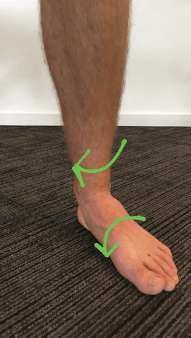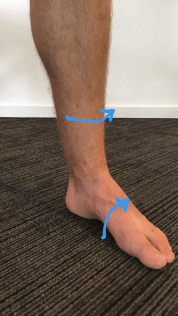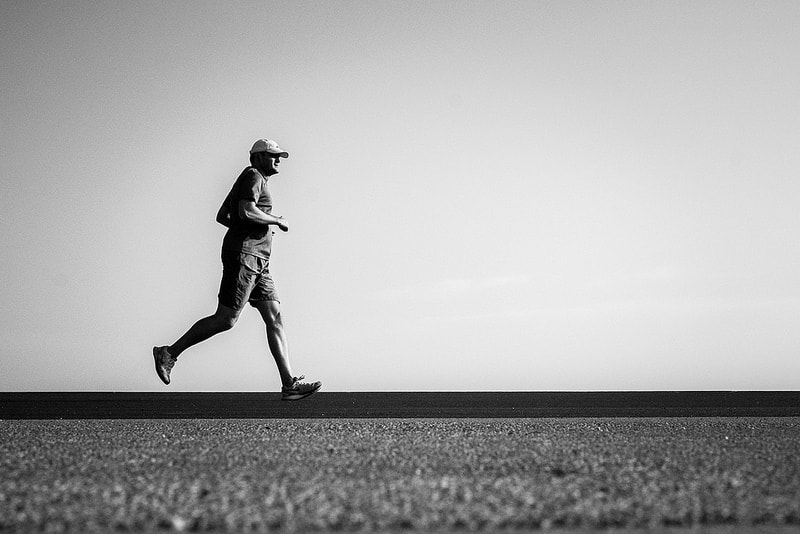|
10/30/2017 Six Ways to Improve Your Running Performance This Offseason - Part I: Foot and Ankle MobilityRead NowAs a runner, ensuring adequate foot and ankle mobility should be a priorityMaintaining functional mobility of the foot and ankle is extremely important for runners of all skill levels. When the foot makes contact with the ground, a series of biomechanical events occurs throughout the entire body which allows our foot and ankle to absorb shock and to assist in propelling us over the ground to the next step. If any one of the biomechanical requirements of the foot and ankle is not fully functional, the human body will create a compensatory pattern to get the desired result of continued forward motion. Over time, compensatory patterns may lead to abnormal movement patterns and running related injuries, like IT Band Syndrome, shin splints, knee pain and/or plantar fasciitis to name a few. Runners, competitive and recreational alike, consistently show patterns of abnormal foot mobility. Although some runners may be talented (and lucky) enough to sustain compensatory patterns without getting injured, for most of us, this is not the case. At the foot, pronation and supination are required for running without compensation. Contrary to popular belief, pronation is normal and needed for appropriate biomechanics to occur elsewhere up the leg and into the body! Shoes that lock the foot into supination are inappropriate for most runners as they may feel great initially, but they are a band aid that could likely cause a different area to breakdown over time. During the initial loading phase of running (foot strike), the outside of the foot should hit the ground first. From here, the foot ‘unlocks’ and rolls into pronation - simply put, the arch collapses. Pronation allows for shock absorption and causes a chain reaction up the leg that creates optimal hip - especially glute - and core musculature utilization. Both limited pronation mobility as well as pronation control can lead to bunion formation, knee pain, and low back issues. Following pronation, the foot supinates (arch lifts) and forms a rigid lever for the lower extremity to push from to take the next step. The better your foot supinates, the more successful your calf and glutes will be to help propel your body forward. Both limited supination mobility and supination control can lead to big toe pain, Achilles and calf strains, and anterior hip discomfort. Ideally, the ankle should be close to neutral at foot strike, although exact positioning will depend on whether you have a heel, mid, or forefoot strike. The ankle then moves through a significant amount of dorsiflexion during the late stance phase of the running cycle. As the foot pushes off and enters the swing phase, the ankle moves into plantarflexion. Every step taken while running requires a large range of ankle dorsiflexion and plantarflexion and insufficient mobility can lead to altered biomechanics and compensatory patterns. If ankle dorsiflexion is limited, it is difficult for the hamstrings and calves to effectively help absorb impact forces during the initial foot strike phase of running. Additionally, limited ankle dorsiflexion during the late stance phase will result in compensatory motion in the low back - specifically, in the form of hyperextension. As you can see from this basic overview, there are many complexities in terms of how the foot and ankle move during the gait cycle. Too much or too little pronation, supination, and dorsiflexion can lead to a number of different injuries which is why obtaining ideal foot and ankle mobility is so important. Developing foot and ankle mobility and stability takes work, but fortunately for our readers, we have created some exercises to help! Below you will find a guide to improve the most important ankle and foot motions of the running cycle: pronation, supination, and dorsiflexion. For example, if you have a supinated foot (high arch) and your arch has trouble dropping, you should work on pronation exercises. Or if you have an ankle that lacks dorsiflexion, you should work on dorsiflexion exercises. As a note - if you have trouble determining how much foot motion and/or stability you have, please reach out to your physical therapist to learn more about how your foot moves and what biomechanics, if any, need to be addressed. Pronation  To the left is a pronating foot (it's my foot and it could use more motion!). You will see that the arch collapses (a little) and the tibia (shin bone) rotates in. If your foot cannot pronate well, similar to mine, then you should consider trying the "Improving Pronation" video below! Keep in mind that foot pronation is necessary to absorb shock and activate your glutes! Improving Pronation: Gently roll your knee in and push down through your arch - you should not feel much with this drill. Your knee should be pain free too! Improving Pronation: While doing a backwards rotational lunge, gently roll your front knee in and push down through your arch. Supination  To the left is a supinating foot. Notice how the arch lifts as the tibia (shin bone) rotates out. If your foot has trouble supinating, consider trying the "Improving Supination" video below! Remember, foot supination is crucial for effective forward propulsion during walking and running! Improving Supination: Rotate your back knee out and notice your arch lift - just make sure you keep your big toe down! Improving Supination: While keeping the foot closest to the box fully on the ground, rotate your opposite leg and step to the box. Make sure to keep your big toe down! Testing Dorsiflexion: Your goal with this test is to keep your heel down, push your knee forward over your 2nd toe, and gently tap the wall with your knee. Keep sliding your foot backward from the wall until it is difficult to tap the wall without your heel lifting. To have "normal" dorsiflexion, you should be able to fit your fist between the wall and your toes. If ankle dorsiflexion is lacking, it is likely that you will compensate through your low back and knees during every step of walking and running. Improving Dorsiflexion: In the video below, the focus is on your back leg. Keep your back heel down and push your back knee forward over your second toe (you could also perform this with your backside knee in a bent position). Once you feel a stretch in your calf and/or Achilles, use your backside knee and hips to pulse forward, side to side, and rotate as shown in the video. Improving Dorsiflexion: Your goal for this exercise is to drive the knee and shin forward as you perform mini squats. In addition to driving the knee and shin straight forward, make sure to drive inward and outward as shown in the video. Dr. Dan Benson, DPT, OCS, FAFS
Forefront Physical Therapy Belltown & South Lake Union 2720 4th Ave #115 Seattle, WA 98121
0 Comments
Advice from our biomechanics experts could help you achieve your running goals faster and with less painAs temperatures cool and leaves begin to change color, runners tend to find themselves entering their offseason. Although continuous race training keeps runners, including myself, focused and motivated, it can eventually break down the body. The risk of burnout, injury, and lingering fatigue build as each race is completed. I am not suggesting you become a couch potato and binge watch Netflix! But I am recommending that offseason training be a part of every runner’s workout regimen. Dr. Dan Benson, DPT, OCS, FAFS
Forefront Physical Therapy Belltown & South Lake Union 2720 4th Ave #115 Seattle, WA 98121 |
Details
Forefront AuthorsWe love writing about injury prevention and functional exercise. We want everyone to share in our motto: movement for a healthy life! Archives
June 2020
Categories
All
|
Signup To Be At The Forefront Of Injury Recovery & Fitness Tips!
Get out of pain and move better!
Scheduling & Inquiries
hello@forefrontpllc.com
Call or Text: (206) 279-2870
Fax: (206) 279-2872
Mailing Address
Forefront Physical Therapy ● 2212 Queen Anne Ave N #333 ● Seattle, WA 98109
Scheduling & Inquiries
hello@forefrontpllc.com
Call or Text: (206) 279-2870
Fax: (206) 279-2872
Mailing Address
Forefront Physical Therapy ● 2212 Queen Anne Ave N #333 ● Seattle, WA 98109
Billing Questions
cclemmons@omnimbs.com
cclemmons@omnimbs.com
Movement For A Healthy Life
Employment Opportunities
Forefront Physical Therapy operates on an entirely paperless system
Frequently Asked Questions
Employment Opportunities
Forefront Physical Therapy operates on an entirely paperless system
Frequently Asked Questions
© 2023 Forefront Physical Therapy, PLLC



 RSS Feed
RSS Feed
